New analysis about where salmon are concentrated at sea could aid fisheries management and help eliminate IUU fishing
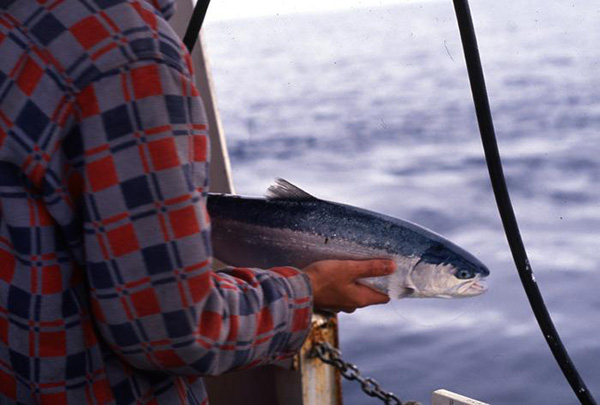
A massive new analysis of high-seas salmon surveys is enhancing the understanding of salmon ecology, adding details about where various species congregate in the North Pacific Ocean and their different temperature tolerances. NOAA’s Office of Law Enforcement hopes to use this information to curb illegal, unreported and unregulated fishing (IUU fishing).
The project, led by researchers at the University of Alaska Fairbanks (UAF), integrates numerous international salmon studies from the North Pacific dating back to the 1950s. Although many individual reports were published by nations and agencies that funded those efforts, they were never fully compiled into an overarching database or analyzed comprehensively at this scale. This new research effort builds upon the extensive and valuable past body of work on the marine component of the salmon life cycle.
Together the data represent a trove of more than 44,000 high seas survey gear hauls across the North Pacific, netting over 14 million salmon. That ocean-based data also provides a contrast from the bulk of salmon research, which tends to focus on river habitat.
“This is a portion of the salmon life cycle that arguably gets overlooked, at least in terms of the grand investment in salmon research,” said Curry Cunningham, an assistant professor at UAF’s College of Fisheries and Ocean Sciences. “As someone who always wondered where all these fish went when they left Bristol Bay, seeing that pattern come to life was so satisfying.”
Although methods and data varied among the studies, they consistently noted the water temperature and location where salmon were caught. That data allowed the research team to create maps with unprecedented detail showing the areas that various salmon species occupy while at sea.
As Yukon Chinook salmon populations decline, researchers turn to technology for answers
For example, the maps highlight a hotspot for Chinook salmon gathering in the Bering Sea. They chart a path that maturing sockeye tend to take from the North Pacific and Gulf of Alaska toward the Alaska Peninsula, traveling through passes into the Bering Sea outside Bristol Bay throughout the spring and summer.
“It’s not as if all these salmon are going to some party in the middle of the Pacific,” said lead author Joe Langan, who worked on the project as a postdoctoral fellow at UAF. “This gives us a broad look at where they go.”
The study also produced more evidence that cold-water tolerance varies significantly among salmon species. Sockeye and chum salmon were commonly found in temperatures down to just a few degrees above freezing, while coho and steelhead were absent from the coldest areas. Chinook and pink salmon lived in the middle of those ranges.
Those tendencies are likely to influence which species will be most capable of shifting to colder waters as their traditional ranges are warmed by climate change, Cunningham said.
Can an underwater artificial intelligence bot detect IUU fishing?
The heart of the dataset is from the 1950s to the 1990s, and the research required digging up forgotten reports from varying sources. Skip McKinnell, a retired Department of Fisheries and Oceans Canada researcher and expert in high-seas salmon research, participated in some of the earlier surveys. He helped dredge up, compile and standardize many of those older reports.
“It was more of a search and rescue mission rather than convincing anyone to provide their data,” Langan said.
The project was funded by the National Oceanic and Atmospheric Administration’s Office of Law Enforcement, which hopes to use information about where salmon are concentrated at sea to help curb illegal fishing. The centralized database will be housed by the North Pacific Anadromous Fish Commission and made publicly available.
Follow the Advocate @GSA_Advocate
Now that you've reached the end of the article ...
… please consider supporting GSA’s mission to advance responsible seafood practices through education, advocacy and third-party assurances. The Advocate aims to document the evolution of responsible seafood practices and share the expansive knowledge of our vast network of contributors.
By becoming a Global Seafood Alliance member, you’re ensuring that all of the pre-competitive work we do through member benefits, resources and events can continue. Individual membership costs just $50 a year.
Not a GSA member? Join us.
Author
-
Responsible Seafood Advocate
[103,114,111,46,100,111,111,102,97,101,115,108,97,98,111,108,103,64,114,111,116,105,100,101]
Tagged With
Related Posts
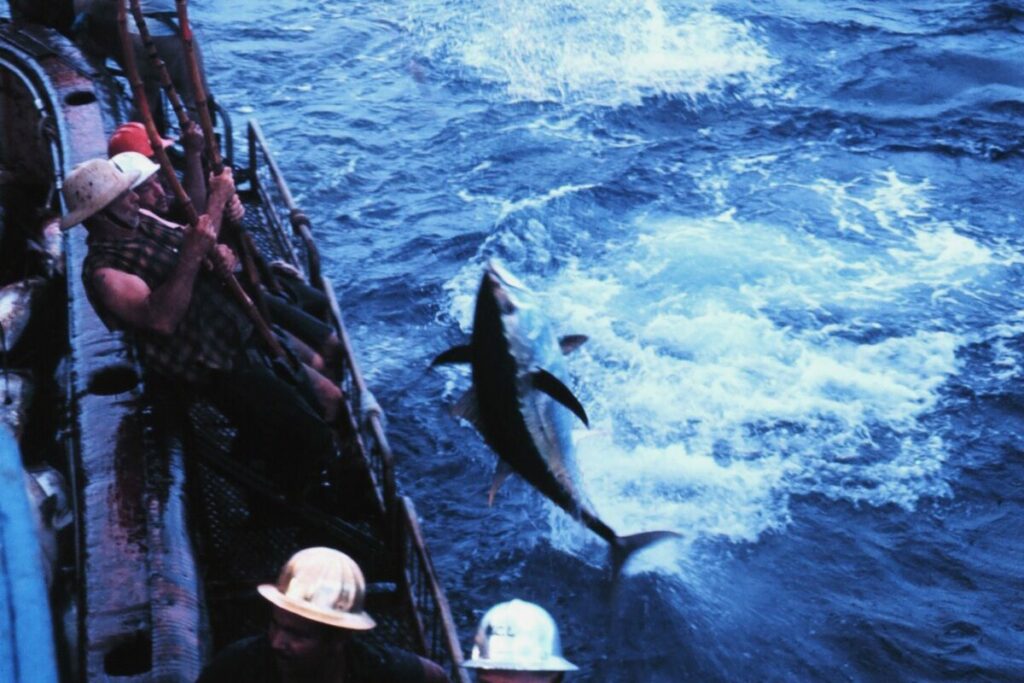
Fisheries
Fishing effort dynamics around the Galápagos Marine Reserve as described by Automatic Identification System data
Spatial and seasonal data are essential to understanding fishing effort dynamics and improving fisheries management in less-studied areas.
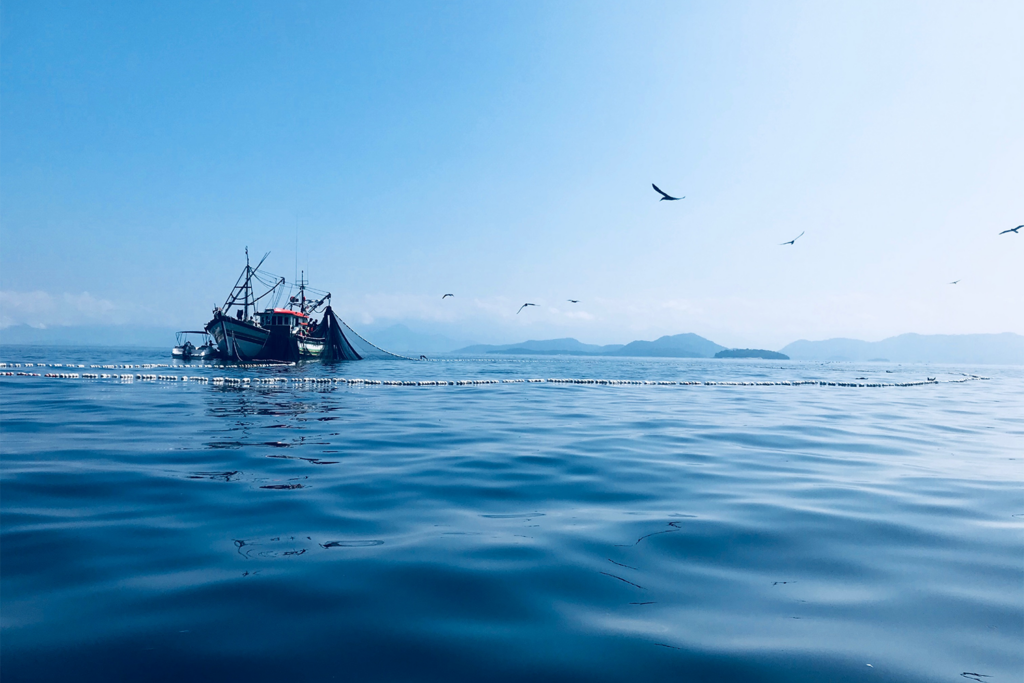
Fisheries
Putting IUU fishing on the map: Global Fishing Watch intends to bring the invisible into view
With $60 million in Audacious Project funding, the IUU fishing watchdogs aim to leverage AI and satellite data to halt illegal activity at sea.
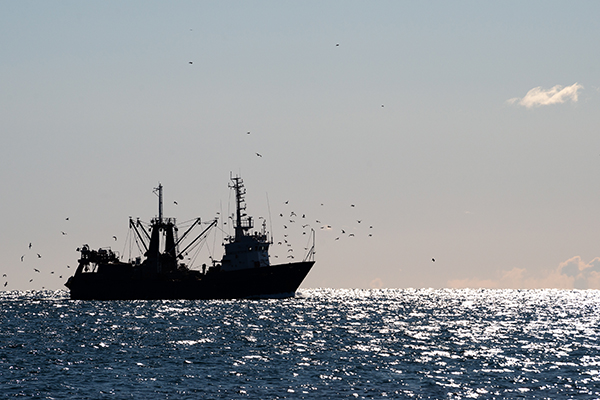
Responsibility
Report: Ocean warming may intensify IUU fishing and threaten global security
The Royal United Services Institute warns that ocean warming caused by climate change could intensify IUU fishing and threaten food security.
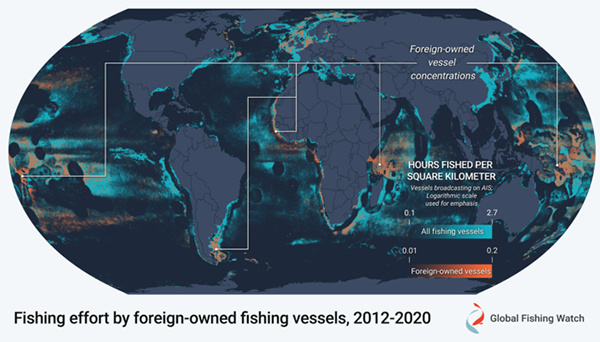
Fisheries
GPS data may identify potential IUU fishing behavior
A study led by Global Fishing Watch provides new insight into potential IUU fishing behavior that could help improve fisheries management.



